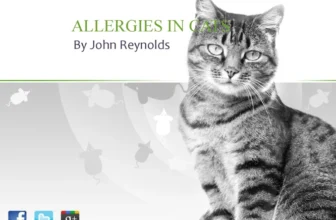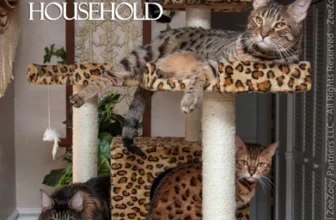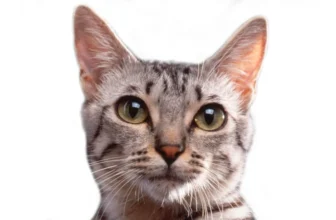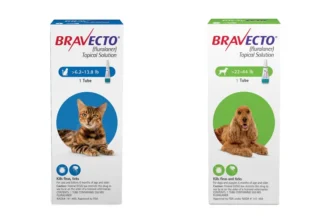Cats are beloved pets all over the world, each breed known for its unique characteristics. California Spangled Cats are a particularly fascinating breed with a distinctive appearance and personality. However, having a California Spangled Cat as a pet comes with unique challenges, including understanding their nutritional requirements. Proper nutrition is essential for maintaining the health and wellbeing of California Spangled Cats. In this comprehensive guide, we’ll explore everything you need to know about the nutritional needs of California Spangled Cats. From understanding their dietary requirements to selecting the best food and dealing with common health problems, we’ll cover it all. So, sit back and let’s dive into the fascinating world of California Spangled Cats and their nutritional needs.
What Makes California Spangled Cats Unique?
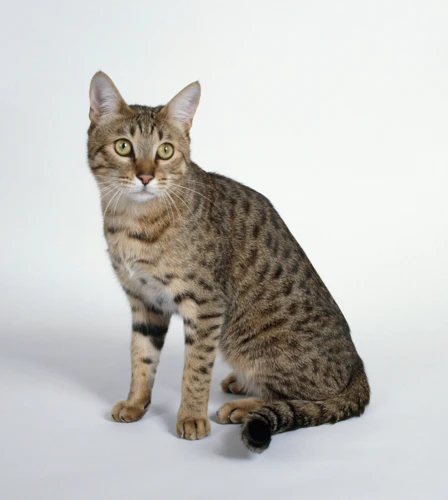
California Spangled Cats are a unique and beautiful breed that captures the attention of many cat lovers. As a breed, these cats have several distinctive traits that set them apart. From their striking coats to their playful and affectionate personalities, there is a lot to love about California Spangled Cats. However, to ensure your feline friend is in their best health, it’s important to understand their unique nutritional needs. A balanced diet that meets all the required nutrient requirements is essential for maintaining a healthy California Spangled Cat. In this article, we’ll explore what makes these cats unique and how to provide them with the proper nutrition they require. We’ll also touch on common health issues and recommended supplements that can help your cat thrive.
Appearance and Personality of California Spangled Cats
California Spangled cats are an elegant, muscular, medium-size breed with a unique spotted coat. Their exotic look is similar to that of their wild ancestor, the spotted African serval cat. In addition to their distinct appearance, these cats are known for their playful and energetic personalities.
California Spangled cats have a triangular-shaped head with large, erect ears and almond-shaped eyes. Their bodies are muscular and lean, with a long neck and a long tail. They have a rather short coat length, which ranges in texture from soft and silky to dense and plush. However, their most notable feature is their spotted coat, which comes in a variety of colors such as brown, black, silver, and bronze. The coat gives California Spangled cats a wild, exotic appearance and makes them stand out from other domestic breeds.
Personality traits of California Spangled cats
California Spangled cats are known for their friendly, affectionate, and playful personalities. They love being around people and are often described as being both intelligent and vocal. They are social cats and enjoy interacting with their owners and other animals, especially with other cats. They are not overly demanding and usually aren’t clingy, but they do like to be involved in family activities and routines.
Adaptability of California Spangled cats
California Spangled cats are adaptable and can adjust to environments without much trouble. Whether you live in an apartment or a spacious house, these cats are happy as long as they are given enough attention, exercise, and mental stimulation. They enjoy playing with toys, climbing, and scratching on scratching posts. A cat tree or a perch near a window that provides them with a view of the outside world is an excellent addition to their living space.
Intelligence and Trainability of California Spangled cats
California Spangled cats are intelligent and can learn tricks and commands quickly. They are curious and enjoy exploring their surroundings. Training them can be a fun and enriching experience for both the owner and the cat. Positive reinforcement training combined with playtime is an excellent way to bond with your California Spangled cat and encourage good behavior.
To maintain the good health and energy levels of California Spangled cats, it is essential to provide them with proper nutrition. Feeding them high-quality and protein-rich food will provide them with the necessary nutrients to support their active lifestyle. To learn more about the recommended diet for California Spangled cats, check out the best food for California Spangled cats.
How California Spangled Cats Differ From Other Breeds
California Spangled Cats are a unique breed amongst the many different varieties of cats. Their distinctive physical characteristics and behavior make them instantly identifiable among other breeds. Here are some ways in which California Spangled Cats differ from other breeds:
- Appearance: California Spangled Cats are easily recognized by their distinctive spots and stripes on their fur coats. Unlike other breeds, they typically have robust and muscular bodies, which are relatively larger in size. These cats have almond-shaped eyes, a unique square-shaped head, and large ears that make them look highly alert and intelligent.
- Behavior: Unlike some breeds, California Spangled Cats are quite active and outgoing. They love to play, run around, and explore their surroundings. These cats enjoy the company of their human family and are not aloof like some other breeds. They are very engaging and are known to be loyal, loving, and friendly towards their owners and other pets.
- Sensitivity: California Spangled Cats are known to be highly sensitive to their surroundings. They thrive in environments that offer great stimulation such as toys, music, and other forms of entertainment. They are quick to react to changes in their environment and are known to be highly perceptive and intelligent.
- Intelligence: Unlike many other breeds, California Spangled Cats are highly intelligent and are known to be problem-solvers. They are quick to learn, and they enjoy being challenged through puzzles and games. These cats are also known for their remarkable ability to communicate with their owners effectively through body language, vocalizations and other means.
- Energy: California Spangled Cats are known to be highly energetic, and they require ample space and opportunities to play and exercise. They are not suitable for lazy or inactive households as they need daily exercise and mental stimulation to maintain their physical and mental health.
The unique traits of the California Spangled Cat breed make them an excellent choice for pet owners who want a lively and engaging feline companion. If you’re considering adopting one, make sure you provide plenty of stimulation, exercise, and a healthy diet to help them lead a happy and fulfilling life.
The Importance of Nutrition for California Spangled Cats
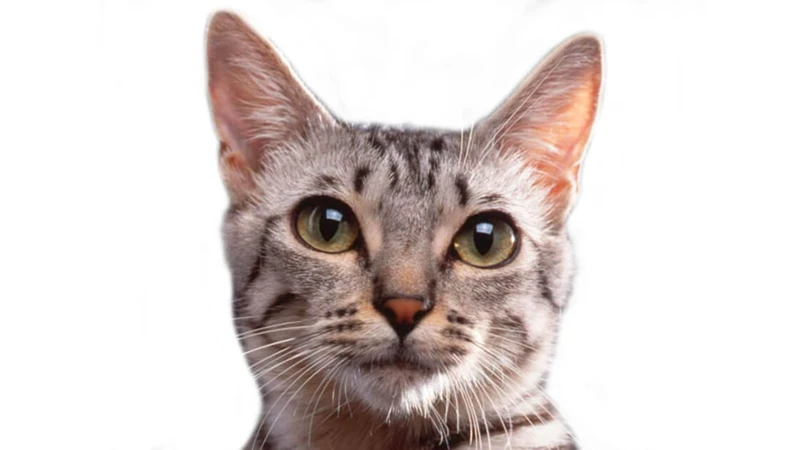
As a cat parent, providing your California Spangled cat with proper nutrition is crucial for their overall health and happiness. Nutrition plays a pivotal role in maintaining your cat’s body functions and providing them with the energy they need to fulfill their natural instincts. However, with the plethora of cat food options available in the market, it can be a daunting task to understand your cat’s nutritional requirements and choose the best food for them. In this comprehensive guide, we’ll delve into the significance of nutrition for California Spangled cats, the nutrients they need, and how to choose the right food for them.
Why Proper Nutrition is Critical For Your Cat’s Health
As a caring cat owner, you want nothing but the best for your California Spangled cat. Proper nutrition is critical for the well-being of your cat, and it’s important to understand why.
Nutrients
Providing your cat with a balanced diet is essential to maintain its vibrant energy and overall health. Nutrients are the building blocks that keep your cat’s body functioning correctly. They help provide energy, improve the immune system, support healthy bones, maintain fur, and encourage brain and eye development.
Weight Management
Proper nutrition is essential for maintaining healthy body weight. Keeping your California Spangled at an appropriate weight reduces the risk of chronic diseases, such as diabetes, heart disease, and joint problems.
Dental Health
Dental health is crucially important in cats, as periodontal disease can lead to serious health issues. Proper nutrition can help improve dental health by reducing plaque accumulation and supporting healthy gums and teeth.
Skin and Coat Health
California Spangled cats are known for their beautiful and glossy coat. Providing your cat with the right nutrients can promote healthy skin and fur. Omega-3 and Omega-6 fatty acids, vitamin E, and biotin are essential for healthy skin and a shiny coat.
Urinary Health
Urinary tract problems such as bladder stones and urinary tract infections are common in cats. Proper nutrition can help reduce urinary diseases by encouraging increased water intake and reducing the mineral content in the diet.
Immune System
The immune system plays a significant role in your California Spangled’s health. A well-balanced diet rich in nutrients, such as vitamin C, vitamin E, and antioxidants, can boost the immune system, which helps prevent diseases.
Proper nutrition for your California Spangled cat is crucial to maintain its health, energy, and overall well-being. A balanced diet provides nutrients that maintain a healthy weight, help improve dental and urinary health, promote healthy skin and fur, and support a robust immune system.
Understanding Your Cat’s Nutritional Needs
To ensure that your California Spangled cat remains healthy and happy, it is important to understand its nutritional needs. Here are some key factors to consider when choosing a diet for your feline companion:
1. Protein: Cats are obligate carnivores, which means that they need high amounts of protein in their diet to maintain their optimal health. Look for cat food that lists a high-quality protein source as the first ingredient on the label, such as chicken, turkey, or salmon.
2. Fat: Fats are an important part of a cat’s diet as they provide them with essential fatty acids that help in the absorption of fat-soluble vitamins, as well as energy. However, it is important to ensure that the fat content in your cat’s diet isn’t too high, as obesity can lead to numerous health problems in felines.
3. Carbohydrates: While cats don’t require high amounts of carbohydrates in their diet, they do need some to meet their energy requirements. However, it is important to understand that not all carbohydrates are created equal. Look for cat food that contains healthy sources of carbohydrates such as sweet potato or brown rice.
4. Vitamins and Minerals: Cats require a variety of vitamins and minerals to meet their daily nutritional requirements. Look for cat food that contains a range of vitamins and minerals, including vitamins A, E, and D, as well as minerals like calcium and zinc.
5. Water: Providing your cat with clean and fresh water is essential to its overall health. Felines require plenty of water to maintain their urinary tract health and avoid dehydration.
By keeping in mind these nutritional needs and selecting high-quality cat food that meets them, you can ensure that your California Spangled cat remains healthy and happy for years to come.
How to Choose the Best Food for Your California Spangled Cat
One of the most important factors in ensuring your California Spangled Cat maintains good health is choosing the right food. With so many options available, it can be overwhelming to know where to start. To help you make the right choice, here are some key considerations for selecting the best food for your feline friend.
1. Look for High-Quality Ingredients: When examining cat food labels, make sure the first few ingredients listed are high-quality sources of protein, such as chicken, fish, or turkey. Avoid foods that contain “by-products,” fillers, or artificial preservatives.
2. Consider Your Cat’s Age and Activity Level: Different life stages and activity levels require varying levels of nutrients. For example, kittens require more protein and fat than adult cats, while senior cats may require fewer calories to maintain a healthy weight.
3. Check for Essential Nutrients: Essential nutrients for cats include high-quality protein, taurine, omega-3 fatty acids, and vitamins and minerals. Make sure the cat food you choose contains all of these nutrients.
4. Pay Attention to Allergies and Sensitivities: Some cats may have allergies or sensitivities to certain ingredients, such as grains or dairy. If your cat has frequent ear infections, skin irritations, or digestive issues, a specific diet formulated to address these issues may be needed.
5. Choose Wet or Dry Food: Both wet and dry food can provide adequate nutrition for your cat, but there are pros and cons to each. Wet food can be more palatable and help with hydration, while dry food is more convenient and can help prevent dental issues. Consider your cat’s preferences and your own lifestyle when making this choice.
6. Consult with Your Veterinarian: If you’re unsure about which food to choose, or if your cat has specific health concerns, consult with your veterinarian. They can provide recommendations based on your cat’s individual needs.
Here is a helpful table summarizing the key points to consider when choosing the best food for your California Spangled Cat:
| Consideration | Key Points |
| Ingredients | Look for high-quality sources of protein and avoid by-products and fillers. |
| Age and Activity Level | Choose a food that is appropriate for your cat’s life stage and activity level. |
| Essential Nutrients | Make sure the food contains all of the essential nutrients for cats. |
| Allergies and Sensitivities | Avoid ingredients that may trigger allergies or sensitivities, and consider a specialized diet if necessary. |
| Wet or Dry Food | Consider your cat’s preferences and your own lifestyle when choosing between wet and dry food. |
| Consult with Your Veterinarian | If you’re unsure, or if your cat has specific health concerns, ask your veterinarian for advice. |
By considering these factors and taking the time to research the different food options available, you can make an informed decision and help ensure your California Spangled Cat stays healthy and happy.
How Often and How Much to Feed Your Cat
When it comes to feeding your California Spangled cat, it is important to know the proper portion sizes and feeding schedule. Overfeeding can lead to obesity, diabetes, and other health problems, while underfeeding can cause malnourishment and weakness. Below is a table outlining recommended feeding amounts and frequencies based on your cat’s weight:
| Weight (lbs) | Dry Food Amount (cups) | Wet Food Amount (oz) | Feeding Frequency |
|---|---|---|---|
| 4-6 | 1/4-1/3 | 2-3 | 2-3 times/day |
| 7-9 | 1/3-1/2 | 3-4 | 2 times/day |
| 10-12 | 1/2-2/3 | 4-5 | 2 times/day |
| 13-15 | 2/3-3/4 | 5-6 | 2 times/day |
| 16-18 | 3/4-1 | 6-7 | 2 times/day |
These are just general guidelines, and it is important to consult with your veterinarian to determine the best feeding plan for your cat. Keep in mind that factors such as age, activity level, and overall health can affect how much and how often your cat should be fed. It is also important to provide fresh water at all times to prevent dehydration.
In addition to portion sizes and feeding frequency, it is important to choose the right type of food for your California Spangled cat. Look for high-quality, grain-free cat food that is rich in protein and low in carbohydrates. Avoid feeding your cat table scraps or human food as it can upset their digestive system and lead to obesity. Stay consistent with your cat’s feeding schedule and monitor their weight and overall health regularly to ensure they are getting the proper nutrition they need.
Common Health Problems and Nutritional Solutions
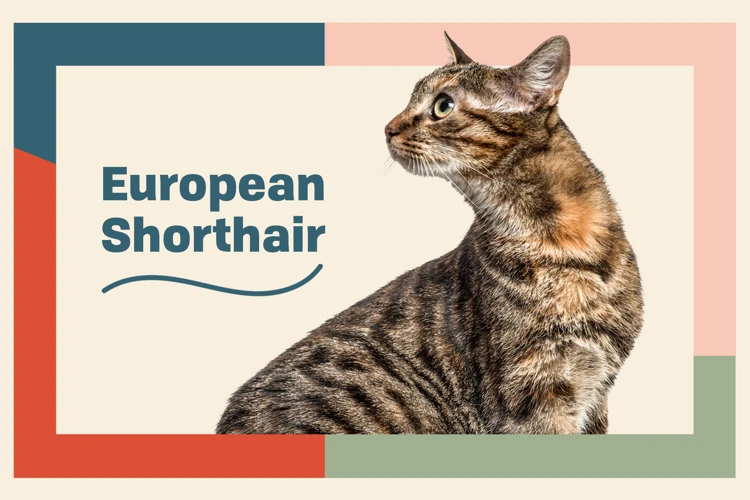
As much as we adore our California Spangled cats, they are prone to certain health problems just like any other breed. However, good nutrition can help to alleviate the severity of these problems and possibly even prevent them from occurring in the first place. In this section, we’ll explore some of the most common health issues faced by California Spangled cats and the nutritional solutions that can help keep them healthy and happy. So, let’s dive in and learn how nutrition can play a critical role in the well-being of our feline friends.
Dental Health
The dental health of your California Spangled cat is just as important as their overall health. Poor dental hygiene can lead to a variety of health issues like bad breath, gum disease, tooth decay, and even more serious health problems like heart disease. To keep your cat’s teeth and gums healthy, here are some important steps you can take:
1. Regular Teeth Cleanings: Most cat owners don’t think about cleaning their cat’s teeth, but it’s an essential part of their dental health. You can use a pet-friendly toothbrush and toothpaste to clean your cat’s teeth, or you can provide them with dental treats or toys that help clean their teeth as they chew.
2. Monitor Dental Issues: Be aware of any signs of dental issues, such as bad breath or bleeding gums. If you notice any signs, it’s important to take your cat to the vet for a check-up.
3. Feeding Your Cat Dental-Friendly Foods: Feeding your cat dry food instead of wet food can help improve their dental health. Dry food can help scrape away plaque and tartar as your cat chews.
4. Regular Vet Check-Ups: Just like humans, regular check-ups with the vet can help catch any dental problems early on. Your vet can also recommend dental treatments or procedures if necessary.
By taking these steps, you can improve your cat’s dental health and prevent any potential health problems down the line. A healthy mouth means a healthy cat!
Weight Management
Maintaining a healthy weight is crucial for any cat, including the California Spangled Cat. Here are some tips for managing your cat’s weight:
- Monitor food intake: Cats are often overfed, which can lead to obesity. Be sure to measure out your cat’s food and follow feeding guidelines on the packaging.
- Incorporate exercise: Encourage your cat to be active by playing with them and providing toys to keep them entertained. This can also help prevent behavior issues caused by boredom.
- Avoid free-feeding: Avoid leaving food out for your cat to graze on all day, as this can lead to overeating and obesity.
- Consider a weight management diet: Talk to your veterinarian about weight management formulas that can help your cat lose weight in a healthy way. These formulas may contain a lower calorie content and higher fiber content to help your cat feel full.
- Don’t use human food as treats: Human foods can be high in calories and may not provide the proper nutrients your cat needs. Stick to cat-specific treats in moderation.
It is important to monitor your cat’s weight regularly and consult with your veterinarian if you notice any changes. Obesity in cats can lead to a variety of health problems, including diabetes, joint pain, and heart disease. By following these weight management tips, you can ensure your California Spangled Cat stays at a healthy weight and avoids these health issues.
Skin and Coat Health
Maintaining healthy skin and coat is vital for your California Spangled Cat’s overall health and well-being. Here are some essential considerations to keep in mind when it comes to skin and coat health:
- Nutrition: Providing your cat with a balanced and nutritious diet is key to supporting their skin and coat health. Foods rich in omega-3 and omega-6 fatty acids, such as salmon and chicken, can help keep your cat’s coat shiny and healthy. Additionally, adequate protein and vitamin intake can improve skin health and prevent skin issues like dryness or itchiness.
- Grooming: Regular grooming sessions can go a long way in keeping your cat’s skin and coat healthy. Brushing at least two to three times a week can help remove loose hair, dirt, and debris, promoting healthy circulation and stimulating natural oil production in the skin. This can help prevent matting, skin irritation, and other issues.
- Environmental factors: The environment in which your California Spangled Cat lives can have a significant impact on their skin and coat health. Dry air, harsh chemicals, and allergens can all contribute to dry skin, dander buildup, and even hair loss. Be mindful of your cat’s environment and take steps to keep it clean and free of irritants.
- Supplements: In addition to a balanced diet, you may consider adding supplements to your cat’s routine to support their skin and coat health. Omega-3 supplements, for example, can help improve skin elasticity and reduce inflammation. Keeping your cat hydrated with plenty of clean water is also essential for maintaining healthy skin and coat.
By taking steps to promote healthy skin and coat, you can help your California Spangled Cat look and feel their best. Remember to consult with your veterinarian before making any significant changes to your cat’s diet or supplement routine. They can help you determine the best approach for your individual cat’s needs.
Urinary Health
Maintaining urinary health is crucial for California Spangled Cats, as they are prone to certain urinary tract issues. These problems can be caused by a variety of factors, including diet, genetics, and environmental stressors. Here are some things you can do to promote good urinary health in your cat:
- Provide plenty of fresh, clean water: Keeping your cat hydrated is one of the most important things you can do for their urinary health. Be sure to provide fresh, clean water in a clean bowl at all times. You may even want to consider investing in a cat water fountain, which can encourage your cat to drink more water.
- Feed a quality diet: The food you choose for your cat can have a significant impact on their urinary health. Look for a high-quality cat food that is specifically formulated to promote urinary health. These foods will typically have a balanced pH level, moderate magnesium content, and added vitamins and minerals.
- Control your cat’s weight: Overweight cats are at a higher risk for urinary tract issues. Be sure to monitor your cat’s weight and adjust their calorie intake as necessary to maintain a healthy weight.
- Keep the litter box clean: A dirty litter box can lead to urinary tract infections and other health problems. Be sure to scoop your cat’s litter box at least once a day and completely change out the litter at least once a week.
- Watch for signs of urinary problems: If your cat is experiencing urinary problems, it’s important to catch them early. Signs of urinary issues include frequent urination, straining to urinate, blood in the urine, and excessive licking of the genital area. If you notice any of these symptoms, take your cat to the vet right away.
By following these tips, you can help keep your California Spangled Cat’s urinary system healthy and functioning properly. Remember to always consult with a veterinarian if you have any questions or concerns about your cat’s health.
Other Considerations for Feeding Your California Spangled Cat
As a California Spangled cat owner, there are various other factors besides nutritional needs to consider when feeding your furry friend. These factors are important to ensure that your cat receives a well-rounded, healthy diet and is thriving in every way possible. In this section, we will cover several other considerations that you should take into account when feeding your beloved California Spangled cat. From addressing special dietary needs to transitioning your cat to a new food and feeding a mixed diet, we will explore all the essential aspects of feeding your California Spangled cat. So, let’s dive in and discover all the other considerations that you need to know about feeding your California Spangled cat.
Special Dietary Needs
Just like humans, California Spangled Cats can have special dietary needs. Some cats may have allergies or intolerances to certain ingredients, while others may have underlying health conditions that require a specialized diet. Here are some special dietary needs that your California Spangled Cat may have and how to address them:
- Food allergies or intolerances: If your cat is experiencing digestive issues or frequent vomiting, they may have a food allergy or intolerance. Common allergens in cat food include beef, chicken, and dairy products. To determine which ingredients are causing the issues, your vet may recommend an elimination diet or a blood test. Once you have identified the allergen, you can switch to a hypoallergenic cat food or a limited ingredient diet that avoids that specific ingredient.
- Weight management: Obesity is a common issue in cats, and it can lead to a range of health problems such as diabetes and arthritis. If your California Spangled Cat is overweight, your vet may recommend a weight loss diet that is lower in calories and higher in protein. You can also incorporate more exercise into your cat’s routine, such as playing with toys or laser pointers.
- Kidney disease: Older cats are at a higher risk of developing kidney disease, which can make it difficult for their bodies to filter waste products from their blood. To support your cat’s kidney function, you can switch to a renal diet that is lower in protein and phosphorus. Your vet may also recommend giving your cat supplements such as omega-3 fatty acids, B vitamins, and antioxidants.
- Diabetes: Cats can also develop diabetes, a condition in which their bodies are unable to regulate their blood sugar levels. To help manage your cat’s diabetes, your vet may recommend a high-protein, low-carbohydrate diet that can help regulate their glucose levels. You may also need to give your cat insulin shots or oral medications.
- Inflammatory bowel disease: If your cat has chronic diarrhea or vomiting, they may have inflammatory bowel disease (IBD). This condition can be managed with a diet that is easily digestible and low in fat. Your vet may recommend a prescription diet or a home-cooked diet that includes ingredients such as lean proteins and cooked vegetables.
It’s important to work closely with your vet to identify any special dietary needs that your California Spangled Cat may have and to develop a nutrition plan that meets their unique needs. By giving your cat the right diet, you can help maintain their health and happiness.
How to Transition Your Cat to a New Food
Transitioning your California Spangled cat to a new food can be a difficult process if not done properly. It’s important to take time and gradually introduce the new food while monitoring your cat’s reactions.
Here are some steps to follow when transitioning your cat to a new food:
| Step | Description |
|---|---|
| Step 1 | Start by mixing a small amount of the new food with your cat’s current food. The ratio should be 75% old food and 25% new food. |
| Step 2 | Gradually increase the amount of new food while decreasing the amount of old food. Over a period of 7-10 days, the ratio should be 50/50. |
| Step 3 | If your cat experiences any digestive issues during the transition, slow down the process and keep the ratio at the current levels for a few more days. |
| Step 4 | Be patient. Transitioning to a new food can take time, especially if your cat is a picky eater. Offer the new food several times a day in small portions and gradually increase the amount. |
| Step 5 | Monitor your cat’s reaction to the new food. Look for any signs of digestive issues such as vomiting or diarrhea. If these issues persist, stop the transition and consult with your veterinarian. |
It’s important to note that sudden changes in your cat’s diet can cause digestive upset and stress. It’s important to take the time to properly transition your California Spangled cat to a new food. Remember to monitor your cat’s reaction to the new food, be patient, and consult with your veterinarian if any issues arise.
Feeding Your Cat a Mixed Diet
When it comes to feeding your California Spangled cat, you may wonder if it’s okay to offer a mixed diet of both wet and dry food. The short answer is yes, but there are some important things to keep in mind.
The Pros and Cons of a Mixed Diet
Feeding your cat a mixed diet of wet and dry food has its benefits. Wet food can provide your cat with additional hydration, especially if they don’t drink enough water. It also tends to be more flavorful and can offer variety to your cat’s diet. Dry food, on the other hand, can help promote dental health and is more convenient for feeding.
However, there are also some potential drawbacks to a mixed diet. Wet food can spoil if left out too long, and it can be more expensive than dry food. Dry food can also be high in carbohydrates and may not provide the same amount of hydration as wet food.
How to Incorporate a Mixed Diet
If you choose to offer your California Spangled cat a mixed diet, there are a few things to keep in mind:
| Tip | Description |
|---|---|
| 1. Choose Quality Food | Aim for high-quality wet and dry food that meet your cat’s nutritional needs. |
| 2. Monitor Portion Sizes | Pay attention to the amount of wet and dry food you offer and adjust portions based on your cat’s individual needs. |
| 3. Consider Meal Timing | If you feed your cat on a schedule, consider offering wet food as a meal instead of leaving it out all day. |
| 4. Watch for Changes in Behavior or Health | If you notice any changes in your cat’s appetite or behavior, or if they experience digestive issues, consider adjusting their diet accordingly. |
The Bottom Line
Feeding your California Spangled cat a mixed diet can provide them with a variety of nutrients and flavors. However, it’s important to pay attention to portion sizes, the quality of food you offer, and any changes in behavior or health that may indicate a need for dietary adjustments. Consult with your veterinarian if you have concerns or questions about your cat’s diet.
Conclusion
In conclusion, understanding the nutritional requirements of California Spangled Cats is crucial to ensuring their overall health and well-being. By providing a balanced and nutritious diet, you can help to prevent common health problems like dental issues, weight gain, skin irritation, and urinary tract problems. It’s important to choose high-quality, protein-rich foods that meet your cat’s unique needs and preferences.
Remember to consult with your veterinarian to determine the best food and feeding schedule for your California Spangled Cat. They can provide invaluable advice and guidance on how to keep your cat healthy, happy, and active.
Lastly, always keep in mind that feeding your cat is an important responsibility that should not be taken lightly. By being attentive to their nutritional needs and making informed decisions about their diet, you can help your California Spangled Cat enjoy a long and healthy life full of love and companionship. So, put in the effort to provide the best for your feline friend and enjoy the rewards of a strong and lasting bond.
Frequently Asked Questions
How Much Should I Feed My California Spangled Cat Daily?
The amount of food your California Spangled cat needs depends on several factors such as age, weight, activity level, and overall health. However, as a general guideline, adult cats typically require 20-25 calories per pound of body weight each day.
What is the Best Type of Food for My California Spangled Cat?
There is no one-size-fits-all answer to this question since all cats have different nutritional needs and preferences. However, high-quality canned or dry cat food that contains a high percentage of proteins and essential nutrients is an excellent option.
Can I Give My California Spangled Cat Some Treats?
Yes, but in moderation. Treats should only make up 10% or less of your cat’s diet and should be nutritionally balanced.
Do California Spangled Cats Have Any Dietary Restrictions?
No, California Spangled cats do not have any specific dietary restrictions. However, be mindful of your cat’s individual needs and consult with your veterinarian if in doubt.
What Should I Look for When Reading Cat Food Labels?
When reading cat food labels, look for high-quality proteins, essential vitamins and minerals, and sufficient amounts of omega-3 fatty acids. Avoid cat foods that contain artificial flavors, colors, and preservatives.
How Can I Tell If My California Spangled Cat is Overweight?
A California Spangled cat is considered overweight if you cannot feel their ribs or see a waistline when looking at them from above. Visit your veterinarian for a professional evaluation and advice on a weight loss program if your cat is overweight.
Can I Feed My California Spangled Cat a Homemade Diet?
If you want to feed your California Spangled cat a homemade diet, consult with a veterinary nutritionist first. Homemade cat food requires proper preparation to ensure that your cat gets all the essential nutrients they need to stay healthy.
Why is Dental Health Important for My California Spangled Cat?
Dental health is crucial for your California Spangled cat’s overall health. Poor dental hygiene can cause painful oral infections, tooth decay, and even lead to serious health problems such as heart and kidney disease.
How Can I Transition My California Spangled Cat to a New Food?
Gradually introduce the new food to your California Spangled cat’s diet by mixing it with their current food. Begin by adding small amounts of the new food, increasing the portion gradually until your cat is fully adjusted to the new diet.
What Should I Do If I Suspect My California Spangled Cat Has a Food Allergy?
If you suspect that your California Spangled cat has a food allergy, consult with your veterinarian. They may suggest an elimination diet to determine the allergen and recommend dietary changes that will benefit your cat’s health.




